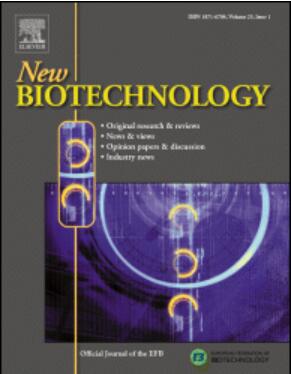Conditional guide RNA deactivation by mRNA and small molecule triggers in Saccharomyces cerevisiae
IF 4.9
2区 生物学
Q1 BIOCHEMICAL RESEARCH METHODS
引用次数: 0
Abstract
CRISPR interference (CRISPRi) technologies have revolutionized bioengineering by providing precise tools for gene expression modulation, enabling targeted gene perturbation and metabolic pathway optimization. Despite these advances, achieving dynamic control over gene expression by CRISPR-based regulation remains a challenge due to its inherently static nature. Utilizing toehold-mediated strand displacement and ligand-responsive ribozymes (aptazymes), this study introduces switchable guide RNAs (gRNAs) that facilitate tunable gene expression mediated by mRNA or small molecule signals. We demonstrate complete silencing of gRNA via strategically designed 5’ or 3’ extensions that impede the gRNA spacer or the dCas9 handle, with subsequent restoration of function through sequestration or cleavage of the obstructive sequence. The resulting toehold-embedded or aptazyme-embedded gRNAs can be deactivated by specific signals, including two full-length translatable mRNAs and two small molecule triggers, thereby lifting CRISPRi repression on targeted genes. This modular approach allows for gRNA-based biocomputing through multi-layer or multi-input genetic logic gates in Saccharomyces cerevisiae. Offering a versatile strategy for post-CRISPR regulation in response to environmental signals or cellular states, this methodology expands the toolkit in eukaryotic systems for reversible control of gene expression.

酿酒酵母菌mRNA和小分子触发器的条件引导RNA失活。
CRISPR干扰(CRISPRi)技术通过提供精确的基因表达调节工具,实现靶向基因扰动和代谢途径优化,彻底改变了生物工程。尽管取得了这些进展,但由于其固有的静态特性,通过基于crispr的调控实现对基因表达的动态控制仍然是一个挑战。利用支点介导的链位移和配体响应核酶(aptazymes),本研究引入了可切换的引导rna (gRNAs),促进mRNA或小分子信号介导的可调节基因表达。我们展示了通过策略设计的5‘或3’扩展来阻止gRNA间隔或dCas9手柄,从而使gRNA完全沉默,随后通过隔离或切割阻碍序列恢复功能。由此产生的嵌入脚点或嵌入适体酶的grna可以通过特定信号(包括两个全长可翻译mrna和两个小分子触发器)失活,从而解除CRISPRi对靶基因的抑制。这种模块化方法允许基于grna的生物计算通过多层或多输入遗传逻辑门在酿酒酵母。为响应环境信号或细胞状态的后crispr调控提供了一种通用策略,该方法扩展了真核系统中基因表达可逆控制的工具包。
本文章由计算机程序翻译,如有差异,请以英文原文为准。
求助全文
约1分钟内获得全文
求助全文
来源期刊

New biotechnology
生物-生化研究方法
CiteScore
11.40
自引率
1.90%
发文量
77
审稿时长
1 months
期刊介绍:
New Biotechnology is the official journal of the European Federation of Biotechnology (EFB) and is published bimonthly. It covers both the science of biotechnology and its surrounding political, business and financial milieu. The journal publishes peer-reviewed basic research papers, authoritative reviews, feature articles and opinions in all areas of biotechnology. It reflects the full diversity of current biotechnology science, particularly those advances in research and practice that open opportunities for exploitation of knowledge, commercially or otherwise, together with news, discussion and comment on broader issues of general interest and concern. The outlook is fully international.
The scope of the journal includes the research, industrial and commercial aspects of biotechnology, in areas such as: Healthcare and Pharmaceuticals; Food and Agriculture; Biofuels; Genetic Engineering and Molecular Biology; Genomics and Synthetic Biology; Nanotechnology; Environment and Biodiversity; Biocatalysis; Bioremediation; Process engineering.
 求助内容:
求助内容: 应助结果提醒方式:
应助结果提醒方式:


